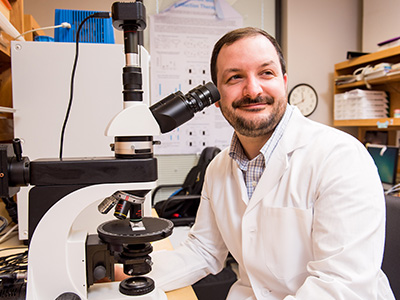 Earlier this year, the Harbert Institute solicited applications from faculty, staff and student innovators across campus for funding awards from $10,000 to $50,000. The application process required researchers to submit a proposed product-development or business plan.
Earlier this year, the Harbert Institute solicited applications from faculty, staff and student innovators across campus for funding awards from $10,000 to $50,000. The application process required researchers to submit a proposed product-development or business plan.
Applicants seeking more than $10,000 also presented a pitch deck to demonstrate project elements such as clinical readiness, potential for regulatory approval, intellectual property protection and project sustainability.
“We’re working to address a critical period in the development process between research and commercialization,” said Kathy Nugent, Ph.D., executive director of the Harbert Institute. “Injecting capital into research projects with commercial potential at this early stage helps bridge the valley of death” that can swallow projects that fail to attract funding “and advance UAB technologies through the pipeline,” Nugent said.
The Harbert Institute received applications from investigators across campus and funded 11 early-stage projects with high commercial potential. These projects represent the schools of Medicine, Health Professions and Engineering, the College of Arts and Sciences and UAB Athletics.
Regional Innovation Strategies funding through the Harbert Institute will in most cases be used to develop prototypes or enable further design and testing. Kyle Wood, M.D., assistant professor in the Department of Urology, is working with co-inventor Andres Morales, Ph.D., to develop ScopeAssist.
While it’s designed to assist in ureteroscopy, the most common treatment for kidney stones, ScopeAssist can be used in any surgeries that require a digital, video, or fiber optic scope. The device is an attachment to the scope that allows for scope protection, better maneuverability, and improved ergonomics for the surgeon. It optimizes the surgical field and gives an “extra hand” to the surgeon.
Advancement in optics have resulted in improved surgical capabilities but also costly equipment with new digital scopes costing more than $20,000 and requiring expensive repairs. The ScopeAssist device reduces scope damage and costly repairs.
“Thanks to the grant support, ScopeAssist can be taken from idea to a fully functional device,” Wood said. “My hope is the device will be the ergonomic assistant that is so greatly needed and allow for improved care for our patients during endoscopic procedures.”
Briana Bryant contributed to the article